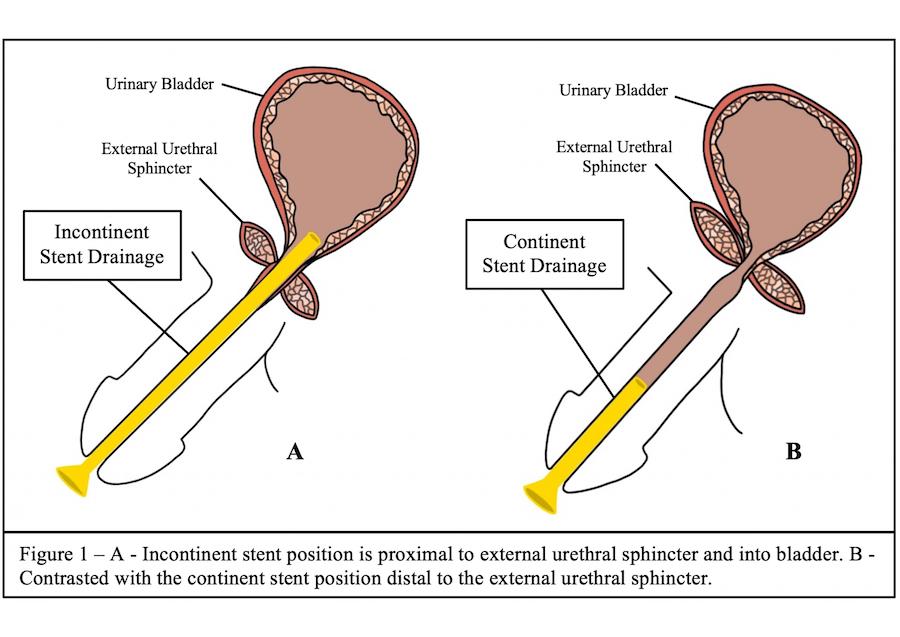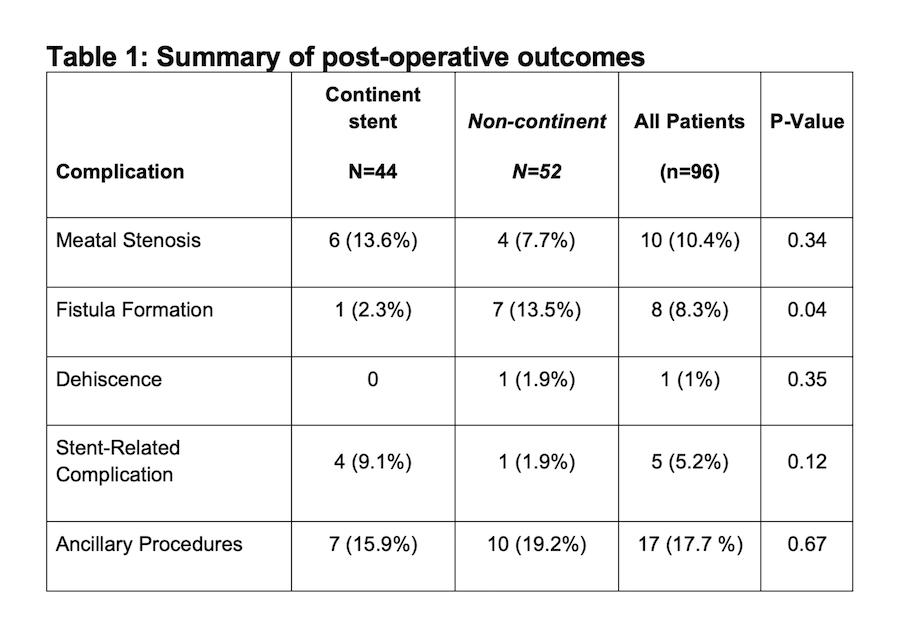Back
Poster, Podium & Video Sessions
Moderated Poster
MP08: Pediatric Urology: Penis & Scrotum
MP08-06: Use of a Mid-Urethral Stent (Continent) for Hypospadias Surgery in Toilet-Trained Children
Friday, May 13, 2022
10:30 AM – 11:45 AM
Location: Room 225
Eyal Kord, Ryan Nasseri, Kobi Stav, Amnon Zisman, Neena Carr*, Beer Yacov, Israel, Martin Koyle, Toronto, Canada, Amos Neheman, Beer Yacov, Israel
- NC
Poster Presenter(s)
Introduction: In older, toilet-trained boys undergoing primary or re-do hypospadias repair, the use of a urethral stent or catheter results in temporary incontinence. Such drainage can potentially impair ambulation, limit the child's autonomy and have a negative psychological impact. We present the use of a mid-urethral stent for hypospadias repair, which allows normal voiding throughout the recovery period in toilet-trained boys.
Methods: Toilet-trained boys undergoing primary or re-do hypospadias repair were retrospectively assessed. Upon preoperative consultation parents were offered two options: Continent drainage in which a stent was placed in the bulbar urethra (group 1), or incontinent drainage (group 2) in which either a stent draining to a diaper or a Foley catheter was placed (Figure 1). Stent related complications as well as surgical outcomes were compared between groups.
Results: 545 children underwent hypospadias repair from 2009 through 2020, with 96 (17.6%) of them toilet-trained at the time of surgery. The continent group and incontinent group consisted of 44 and 52 patients, respectively. No differences were found between groups regarding demographic parameters, severity of hypospadias, operative time or surgical technique. Rates of stent related complications did not differ between the two groups (P=0.12). No significant differences were found with regards to surgical outcomes, complications necessitating additional surgery, meatal stenosis, or dehiscence (Table 1).
Conclusions: Continent preserving mid-urethral stent can be offered to select toilet-trained patients undergoing hypospadias repair without an increased risk for complications.
Source of Funding: No funding was provided for this research.


Methods: Toilet-trained boys undergoing primary or re-do hypospadias repair were retrospectively assessed. Upon preoperative consultation parents were offered two options: Continent drainage in which a stent was placed in the bulbar urethra (group 1), or incontinent drainage (group 2) in which either a stent draining to a diaper or a Foley catheter was placed (Figure 1). Stent related complications as well as surgical outcomes were compared between groups.
Results: 545 children underwent hypospadias repair from 2009 through 2020, with 96 (17.6%) of them toilet-trained at the time of surgery. The continent group and incontinent group consisted of 44 and 52 patients, respectively. No differences were found between groups regarding demographic parameters, severity of hypospadias, operative time or surgical technique. Rates of stent related complications did not differ between the two groups (P=0.12). No significant differences were found with regards to surgical outcomes, complications necessitating additional surgery, meatal stenosis, or dehiscence (Table 1).
Conclusions: Continent preserving mid-urethral stent can be offered to select toilet-trained patients undergoing hypospadias repair without an increased risk for complications.
Source of Funding: No funding was provided for this research.



.jpg)
.jpg)